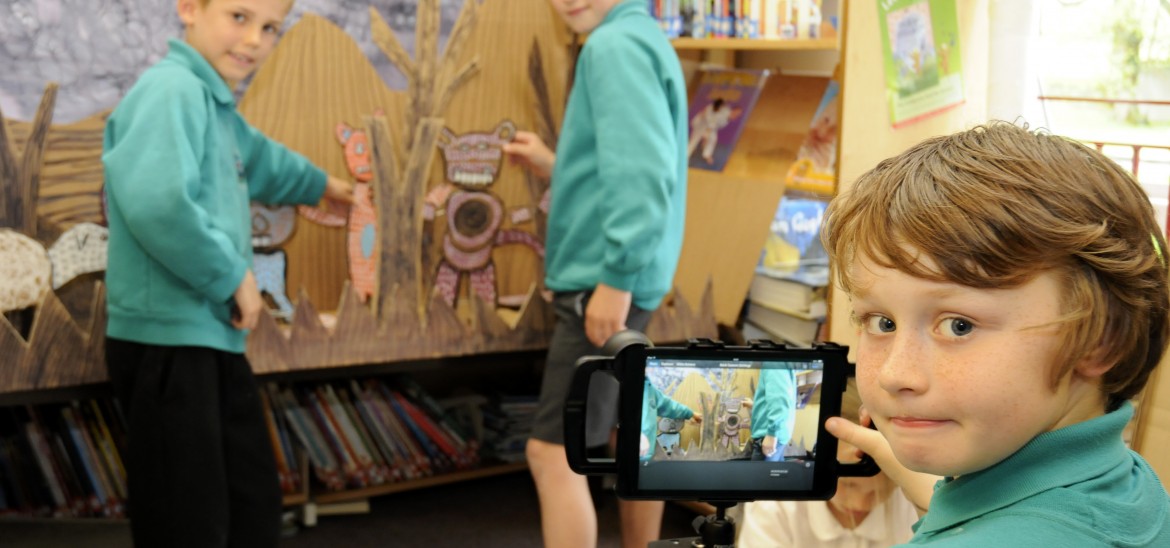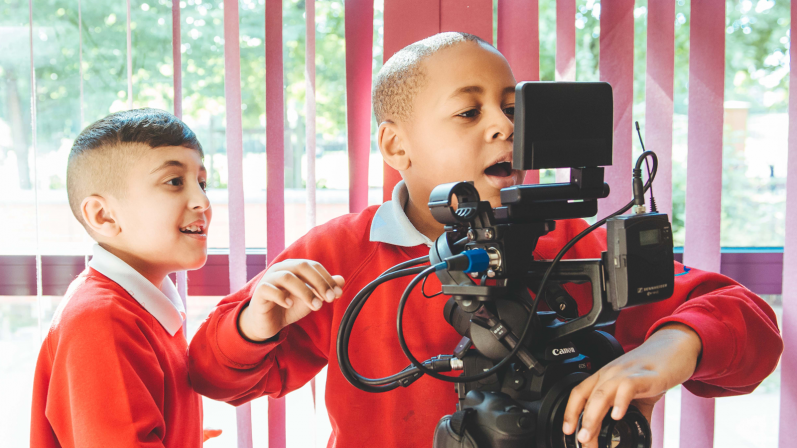Filmmaking
Start teaching your students to make films with our resources and guidance.



This competition has now closed. For other competitions, please see our competitions page.
The Animation Challenge is a new competition that we hope will encourage a wide variety of educators and young people to try animation for the first time or for those that have some experience, to develop their skills further.
The Animation Challenge is open to all young people aged 5 to 19 across the UK. We would encourage individuals, groups of friends, schools and youth groups to participate in the challenge.
The competition will close for entries at 5pm on Friday 28 April 2017. We will announce our winners on Friday 12 May 2017.
Entries will be judged in two age categories: 12 and under and 13 and over. The panel of judges, made up of Into Film staff, professional animators and young people will judge three shortlisted films in each age category and decide on the winners.
How to take part
To begin with, download the free How To Animate resource and get acquainted with the simple process of animation. Once you have made a simple film using the five steps in the resource, you are ready to take on the Stop Motion Animation Challenge. For this, we would like you to create a simple stop motion animation entitled A Day in the Life of… The focus of your animation will depend on what it is you want to animate.
What can I animate?
There are a number of things that can be animated easily without the need to create sets or models. Pixilation animation uses people as ‘living puppets', striking different poses to achieve the animated effect. You can also animate using household objects or food such as toys, cutlery, stationery, sweets or dried pasta shapes. For example, A Day in the Life of a Stapler could show a mischievous stapler causing havoc on a teacher's desk!
Here's an example made by Charlie and Dan, members of our Youth Advisory Council North.
Story
Once you have decided what you are going to animate, you should think about the story you want to tell. We are aiming for an animation of no longer than one minute so it is important that your story is simple but also creative. A helpful way of developing a simple story is to think about the beginning, middle and end, which is known as the three act structure:
Act 1 Beginning: Introduce a character and a problem e.g., a little boy is sad/a caterpillar crawls along a leaf.
Act 2 Middle: Solve the problem e.g., a friend brings him a flower/a chrysalis grows on the leaf.
Act 3 End: Resolve the story e.g., the little boy is happy/a butterfly emerges from the chrysalis.
For more information on developing a story using a three act structure, refer to the Developing Your Idea mini filmmaking guide.
Storyboard
Once you have completed the structure, you are ready to complete a storyboard. The storyboard is a visual representation of your story and will help you when animating as you will know exactly what you want each frame and scene to look like. For more information on storyboarding, refer to the Create a Storyboard mini filmmaking guide. You can also use the Storyboard Template.
Voiceovers, sound effects and music
You are now ready to start capturing your frames. Refer back to the Stop Motion: How To Animate guide for guidance on setting up your equipment and making your objects or characters come to life.
If you are not using dialogue, think about how you can tell the story with visuals. If you are animating people, you can use their facial expressions and body movements to convey feelings and emotion. For objects, you could add facial features such as eyes, eyebrows and mouths using cardboard or paper that can be moved with each frame to show movement and expression. You could also create speech bubbles that you could bring into a frame to create the illusion that the object is talking, like in a comic book.
If you would like to add dialogue, sound effects and music to your animation, see the Voiceovers, Sound Effects and Music in Animation guide.
Editing
Work through all five steps of the Stop Motion: How To Animate guide until you are happy with the frames you have captured. Once you have captured all of your frames, you are ready to finish your animation. Remember to check for unwanted frames or those that contain your hands and remove these. It is usually much easier to remove unwanted frames as you are animating than to take them out when you have exported frames to editing software like iMovie.
If you have not taken part in the Animation Challenge but have made a short starter animation from the How To Animate Guide, you can still enter this competition. We will showcase a selection of these animated films online during the challenge.
To enter, please complete the entry form. You will then be instructed to upload your film and you will receive confirmation on the upload page that this has been successful. If you are aged 17 or under, please make sure you ask a parent or guardian to complete the entrant details part of the form. Films can also be entered by a parent/guardian, teacher or other adult on behalf of a young person or group of young people.
You can apply as an individual, a film club in a school, a youth group or any other group of interested young people, as long as parental or carer consent has been granted through the completion of an Into Film contributor release form. If your film is shortlisted, you will be asked to provide electronic copies of release forms for all of the children and young people appearing in and credited as contributors for the film. If you are unable to provide all release forms as requested, your entry will be disqualified. If your film was shortlisted within the last 12 months, you cannot enter the same film again, however you can submit a different film made by the same person or people.
The Animation Challenge is not about creating professional animated films. It is about participation and taking your first steps into animation or, if you have made an animation before, developing your skills further. Judges will consider the following criteria to make their selection:
The two winners will be awarded with certificates and either £250 worth of equipment to continue making animations or a workshop with a professional animator to teach them some additional hints and tips for improving their animation techniques.
A six-cell template for storyboarding activities.
Size: 43 KB

Start teaching your students to make films with our resources and guidance.